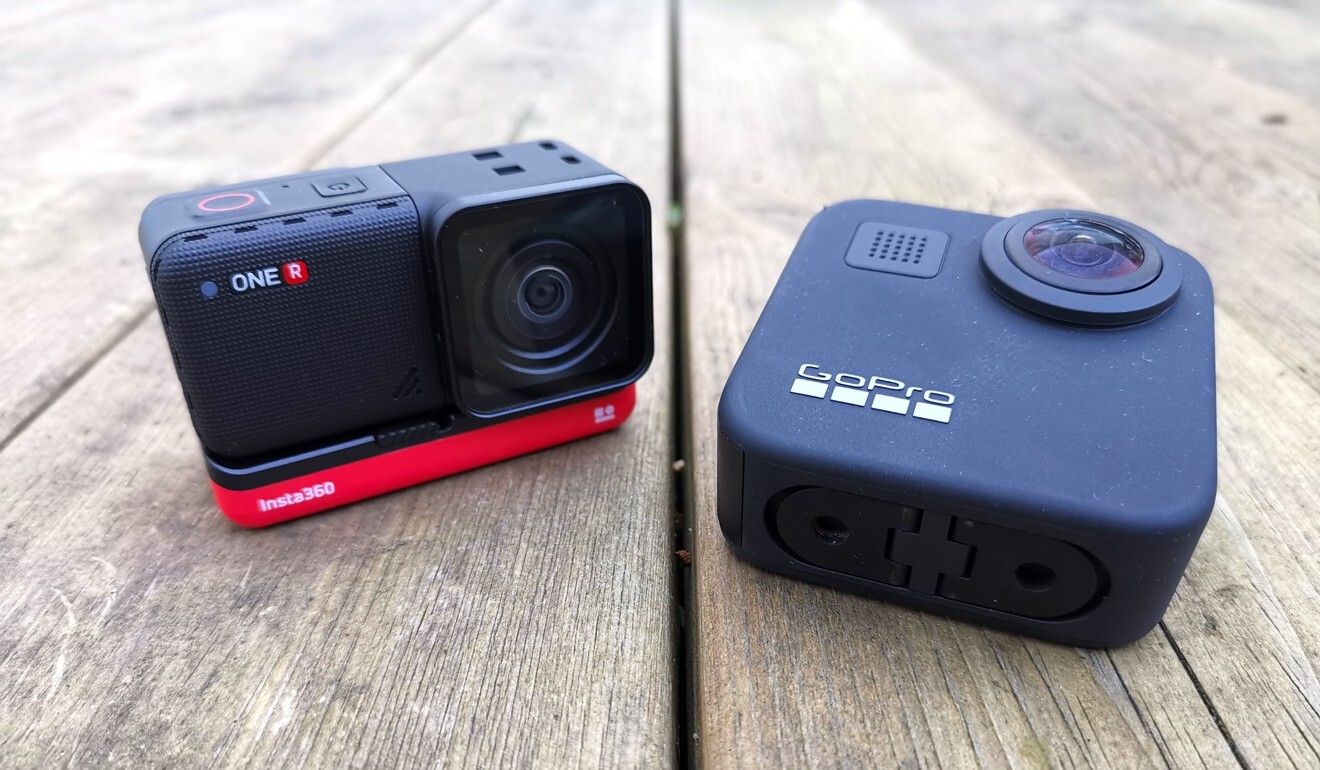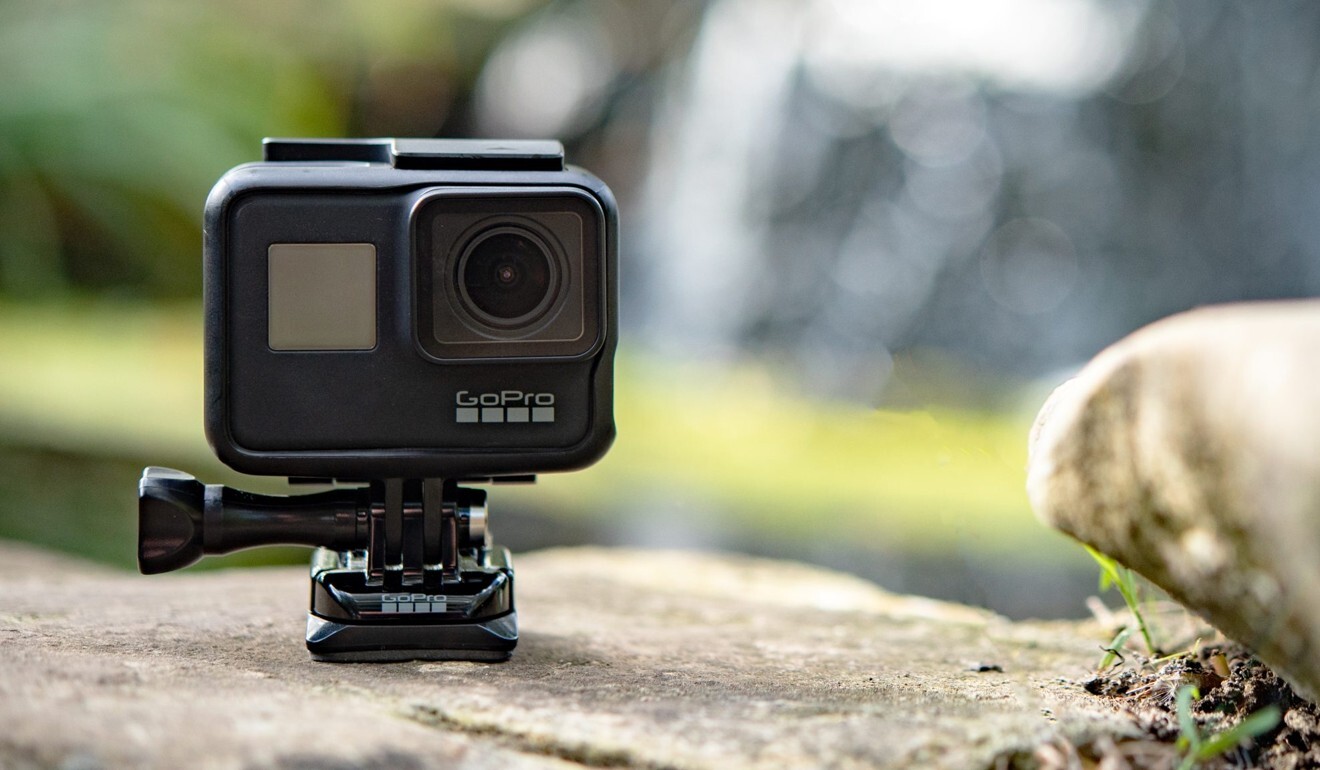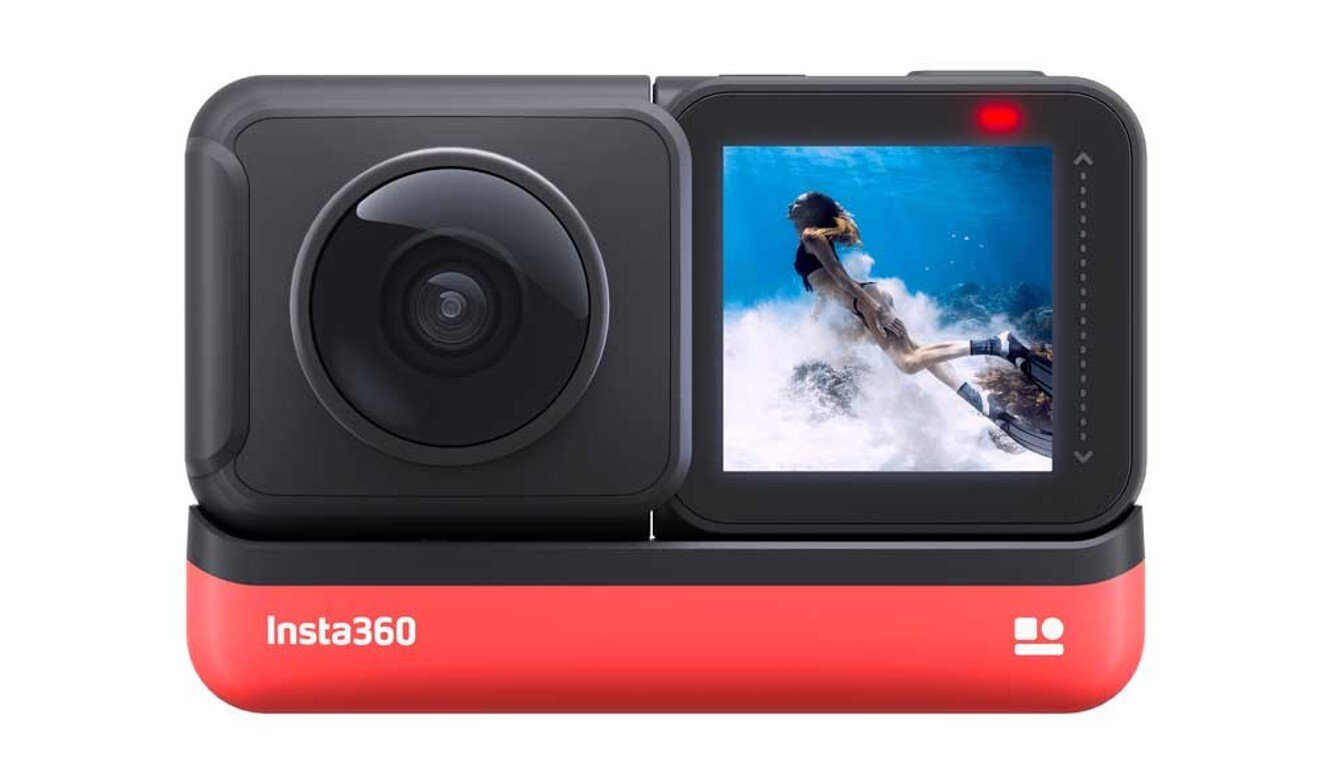
Best 360 cameras: GoPro Max 360 vs Insta360 One R Twin Edition. Which is for you? It depends on what you want one for
- The GoPro Max 360 is waterproof and drop-proof, while the Insta360 has real-time preview in all shooting modes
- Neither camera has a thread for tripods, but both have cutting-edge image stabilisation
Where you point your camera is everything.
That is, unless you have a 360-degree camera, which films all round using two fish-eye lenses.
Able to shoot standard linear video as well, currently the most sought-after 360 action cameras are the GoPro Max 360 (US$499.99) and the uniquely modular Insta360 One R Twin Edition (US$479.99).
So which one is best? That depends on what you’re after.

Design and hardware
They may be targeting a similar kind of videographer, but these two cameras couldn’t be more different in their design.
A chunky square camera weighing 154g and measuring 64mm x 69mm x 25mm, the GoPro Max 360 has two 180-degree fisheye lenses and a 1.75-inch widescreen-shape LCD screen that hosts real-time live previews from either of those lenses. That screen has extensive menus that allow mastery of all of the Max’s features and functions, though there’s also an app that does the same on a smartphone.
Crucially, the GoPro Max 360 is waterproof and drop-proof.
The Insta360 One R comes in six parts. It’s built around a small, square processor module that snaps on to one of the two lens modules in the box; a 360-degree module with two 180-degree fish-eye lenses, and a separate 4K module.

They are interchangeable and take only seconds to swap over, though you also have to snap on the battery module. The final array weighs 150g and measures 115mm x 48mm x 28mm.
The Insta360 One R’s core processor module has a 3.25-inch square (82.5mm square) touch screen that offers a real-time preview even when filming in 360 degrees, which puts it one up on the GoPro Max 360. Other extras include an “invisible” selfie stick that’s automatically edited out of video and photos.
Annoyingly, neither the GoPro Max 360 nor the Insta360 One R have built-in tripod threads, so are tricky to use with standard camera tripods.

Software and features
If action cameras are now considered worthless unless they shoot in 4K, 360-degree cameras also need to fill up all the pixels they can get. For now, that means 5.7K – or 5,760 x 2,880 pixels – at 30 frames per second (fps), which is spread over the entire sphere.
Both cameras achieve that with their fish-eye lenses. However, they’re not so well matched when it comes to linear video.
In its “Hero Mode” the GoPro Max 360 uses one of its fish-eye lenses to shoot in 1,440p resolution – something more than full HD quality, but way less than 4K – at 60fps. Here the Insta360 One R plays its trump card, with its 4K module allowing the capture of 4K video at 60fps. Not only is that superior to the GoPro Max 360 on the numbers, but it’s without the distortion a fish-eye lens always brings.
Both capture video in the H.265 format in 100mbps bitrate and both use cutting-edge video stabilisation technology, called “Max HyperSmooth” by GoPro and “FlowState” by Insta360.

Performance and battery life
Both cameras have very impressive video stabilisation features, with all 360-degree and linear videos fluid and very easy to watch. That’s a mighty improvement on just a couple of years ago.
Both excel with 360 capturing, with the GoPro Max 360 just edging it on colour and detail despite the Insta360 One R’s “Color Plus” and HDR video modes, but it’s a close call.
On linear video the Insta360 One R streaks ahead; its undistorted and native 4K quality video is many times more impressive than the GoPro Max 360’s low resolution captures.
Footage is sent to a smartphone via some slick apps, which offer dozens of in-phone editing options, though they take a little getting to know. In use, the GoPro Max 360 is slightly speedier, using its processing power advantage well, while the Insta360 One R is occasionally ponderous.
Both cameras can be used for just over an hour, with the Go Pro Max 360’s 1,600mAh and the Insta360 One R’s 1,190mAh batteries performing very similarly. However, this is where the Insta360 One R’s modular design comes to the fore again; a 2,380mAh boosted battery case is also available.

Conclusion
On pure usability, the Insta360 One R triumphs. Vloggers will love the ease with which it can record a piece to camera, with that auto-edited-out selfie stick a massive advantage. The previews are handy, the 360 video stabilisation incredible, it’s smaller and it’s squarer and easier to pocket. The modular aspect is also tempting; being able to upgrade later is rare in consumer electronics.
However, despite not being as well designed, it’s hard not to love the more outdoorsy GoPro Max 360 for its super-clear, richly saturated and just as well stabilised 360 video.
If you want options and incredible value, go for the Insta360 One R – it’s two action cameras for the price of One. For top quality 360-degree video alone, the GoPro Max 360 just about gets the nod.

